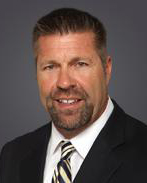Discounted tickets are available now!
New York Professional Events List
 Please wait...
Please wait...
Cal/OSHA Summit 2020: Leading-Edge Strategies for Exceptional Safety Management and Compliance in California
Date
Link to Website
Organizer
Location
Cal/OSHA Summit 2020: Leading-Edge Strategies for Exceptional Safety Management and Compliance in California
October 10-11, 2020 | Westin South Coast Plaza, Costa Mesa
CONFERENCE SNAPSHOT: Cal/OSHA Summit 2020 is a leading state-specific event for California employers and safety professions to get cutting-edge developments on new regulations, compliance strategies, and management tactics.
Employers take notice: 2020 is shaping up to be a year of major concerns for California-based safety professionals. For example, Cal/OSHA’s regulatory focus includes:
- The development of the hospital workplace violence standard, which will likely lead to standards coming to additional workplaces in time
- Ongoing emphasis on heat illness and prevention
- Increased spotlight on communicable illnesses
- The development of standards that closely follow fed/OSHA’s recent revision to the recordkeeping rules and increased penalties
- And more
The Cal/OSHA Summit 2020 will help employers navigate these new changes and prepare for what's coming down the pipeline. Attendees will:
- Access proven strategies to avoid the most common mistakes of Cal/OSHA’s most violated standard on injury and illness prevention
- Ace Cal/OSHA inspections by learning tips for a successful walk-through
- Uncover proven tactics to protect California workers from heat stress and illness, according to Cal/OSHA's strict requirements
- Discover safety incentives that other California companies have successfully implemented to drive low-risk behavior
- Hear motivating and informative talks on post-accident drug testing and injury reporting, HazCom labeling practices, and workplace violence prevention
- Get hands-on with a workshop to help you optimize your return-to-work process
- Identify high-impact strategies to get buy-in on your safety culture program, from management and staff alike
Who should attend? Safety and EHS managers, directors, consultants, and employers with California or multi-state safety compliance obligations.
2020 Agenda
Tuesday, October 10 | Main Conference
Registration & Breakfast
7:00 a.m. – 8:00 a.m.
Welcome Remarks
8:00 a.m. – 8:05 a.m.
California Compliance 360: The Latest Updates Impacting Safety Management and Training
8:05 a.m. – 9:35 a.m.
What impact with the Trump Administration have on federal workplace safety and health-based initiatives and enforcement priorities, and what are the top safety compliance priorities for the Division of Occupational Safety and Health, the Appeals Board, and the Standards Board here in California? You’ll get answers to these questions and more. Cal/OSHA 2020 kicks off with critical updates on new court rulings, policy initiatives, regulatory enforcement, and training requirements under federal OSHA and Cal/OSHA.
Networking and Refreshments Break
9:35 a.m. – 9:50 a.m.
Injury and Illness Prevention Plans in California: How to Avoid the Most Common Mistakes of Cal/OSHA’s Most Violated Standard
9:50 a.m.– 10:50 a.m.
California law requires employers to maintain written—and effective—illness and injury prevention plans (IIPP) for general industry. But, while having an IIPP is mandatory, the state’s IIPP general industry standard is the most violated one here in California. Why is that? And, what can you do to ensure that your organization develops and maintains a comprehensive and effective IIPP that complies with the California Department of Industrial Relations’ (DIR) General Industry Safety Order 3203? Also, what additional IIPP requirements may apply under DIR’s Construction Industry Safety Order 1509?
This session will address:
- The compliance checklist for ensuring you meet applicable IIPP general industry requirements under state law
- Strategies for demonstrating management’s commitment to safety and your IIPP
- What your IIPP communication strategy should include
- Tips for ensuring that employees comply with safe and healthful work practices that don’t violate Cal/OSHA rules and standards
- Strategies for maintaining hazard assessment surveys and follow-up inspections
- The written system for covering accident investigation protocols
- Abatement procedure requirements to include in your IIPP
- When employee and supervisor training on the IIPP should occur
- IIPP recordkeeping essentials
- Additional IIPP requirements for employers in the construction industry
Acing Cal/OSHA Inspections: How to Master the Walk-Through Process—and Reduce Fines if Cited
11 a.m. – 12 p.m.
Cal/OSHA inspections can happen by surprise, and the less prepared you are generally for an inspector’s knock at the door, the more likely you’re at risk for citations and costly penalties. While there are certain “signals” that a Cal/OSHA inspection is likely—an employee’s complaint about an unsafe work practice or an accident report noting a serious injury, illness, or death, for instance—Cal/OSHA inspections may also occur as the result of targeted inspections in high hazard industries, which are determined generally by “DART”—that is, the number of days employees had to miss work, were restricted in the performance of certain work-related duties or transferred to other jobs in the same calendar year. According to Cal/OSHA high hazard industries for FY 2020-2020 include several types of manufacturers, as well as businesses involved with farming, building and framing, nursing and residential care facilities, retail, and transportation. Given the broad authority Cal/OSHA has to conduct inspections, the fact is that every workplace could be vulnerable to an inspection and resulting citations.
This session will teach you what to do in the event of an inspection and how to minimize the risks of high-cost penalties.
You’ll learn:
- Recent Cal/OSHA and OSHA inspection focus areas that could apply to your organization
- Pointers for identifying and preparing for site-specific and unexpected OSHA inspections
- Steps to take before the actual inspection begins
- When negative and positive inspection outcomes generally result—so you’ll know what to do and not do during the inspection process
- What should go into your OSHA inspection preparation plan checklist, including how to address:
- roles and responsibilities
- step-by-step approaches for each phase of the inspection
- data and information that should be at hand
- clear procedures of the rights of all involved in the inspection including employees, the employer, and the inspector(s)
- How to ensure that employer and worker rights are clearly understood and honored—and that the required process is followed by all parties during the inspection
- How to handle a Cal/OSHA inspector’s requests for documents such as audits, training records, accident reports, and near-miss reports efficiently
- How to manage the many “moving parts” of the inspection process, including:
- the opening
- the walk through
- follow-up requests
- the closing conference
- informal settlement discussions
- employee interviews
- What you must do to respond to the issuance of citations
- Tips for communicating with inspectors in a non-confrontational manner
- Cal/OSHA-related liabilities under the Be A Manager Go To Jail Act, “unfair business practices” provisions, and the Bounty Hunter Law
Lunch (Provided)
12:00 p.m. – 1:00 p.m.
The Latest Top Cal/OSHA Violations and How to Avoid Them
1 p.m. – 2 p.m.
Each year federal OSHA publishes its “Top 10” list of violations, which—for 2020—included fall protection, hazard communication, scaffolds, respiratory protection, lockout/tagout, powered industrial trucks, ladders, machine guarding, electrical wiring, and electrical general requirements. What about here in California? What are the top Cal/OSHA violations and what can you do to avoid those as well as the hazard areas federal OSHA has identified?
This session will explain:
- The top Cal/OSHA violations based on recently issued citations and penalties—and how they stack up against what federal OSHA has identified as its “top 10”
- Where Cal/OSHA inspectors are likely to focus their attention this coming year
- Best practices for meeting applicable safety standards related to each of the identified California-specific violation areas
- How personal protective equipment and other proactive safety tools can be used to avoid costly Cal/OSHA citations and penalties
- And more
Heat Stress and Illness: Tips to Protect California Workers and Comply With Cal/OSHA’s Strict Requirements
2:10 p.m. – 3:10 p.m.
Hot working conditions can have adverse and downright severe, and potentially deadly, effects on employees. In 2020, Cal/OSHA amended the heat illness prevention regulation, found in Title 8, section 3385 of the California Code, and ensuring compliance with the regulations continues to be an important, yet sometimes overlooked, area of compliance focus for worksites across the state. It’s, therefore, imperative for California employers to understand and adhere to their obligations under state law to prevent and minimize the effects of heat-related illness, which can arise from working under the hot sun or due to hot working conditions inside.
During this session, you’ll learn:
- Environmental risk factors that contribute to heat illness
- How strict Cal/OSHA’s heat illness prevention regulations are—so you’re clear on what’s required in terms of:
- Providing shade and water
- Monitoring employees for early signs of heat illness
- Establishing emergency response
- Training employees and managers to spot the signs of heat illness
- And other mandatory requirements
- Recommended personal protective equipment essentials for combatting heat stress at work
- Tips for evaluating whether your existing heat illness prevention plan needs work to ensure ongoing compliance with Cal/OSHA regulations
- Best practices for preparing written procedures for your heat illness training program
- Action plans for removing employees from heat stress dangers and maintaining productivity
Networking and Refreshments Break
3:10 p.m. – 3:25 p.m.
Safety Incentives that Work: California Companies that Have Conquered the Incentive/Discipline Maze to Effectively Motivate Safe Behaviors
3:25 p.m. – 4:10 p.m.
Having a zero-injury record can be a big accomplishment. But, when attaining or maintaining zero-injury status becomes a standard that’s engrained into each and every worker, underreporting of minor injuries or near misses is more likely to occur. Cal/OSHA and federal OSHA are concerned about this issue, and, thus, inspectors are on the lookout for safety incentive programs that are flawed in this respect. This session will examine how companies here in California are “getting it right” with how they motivate their workers while complying with the rules governing incentives and disincentives under state and federal law.
You’ll learn:
- Examples of compliant safety incentive programs here in California—and the positive results the safety managers at those companies have been able to achieve with them
- The role of disciplinary programs in the overall incentive/disincentive process
- The costly citations your company could face if Cal/OSHA concludes that your incentives aren’t legal under state law
Multi-State Worksites: Mastering Safety Compliance Across State Lines
4:10 p.m.– 5:10 p.m.
Many California-based employers have operations in other states, and in the growing era of the “gig economy” it’s quite possible for employers that never thought they would employ workers across state lines to be in a situation where they’re managing employees who are working outside of California. When employees work out of state, which safety and health rules and regulations govern? Questions like this arise all the time, and it’s important to know the compliance essentials for mastering your safety and health-related obligations.
During this session, you’ll learn:
- How to tell which workplace safety and health laws govern when you employ out-of-state workers
- Examples of how other states’ regulations may differ from Cal/OSHA and federal OSHA—so you know the types of thorny issues you could encounter if you’re not prepared
- How the Trump Administration’s policies are impacting safety on a national level and what that means for managing safety here in California and at worksites across state lines
- Whether and how some states’ legalization of medical and recreational marijuana factors into drug testing for safety-sensitive positions outside of California
Day 1 Adjourns
5:10 p.m.
Wednesday, October 11 | Main Conference
Breakfast
7:15 am – 8:00 a.m.
Breakfast and Learn: Your Guide to Safety.BLR.com®
7:30 – 7:45 a.m.
Let’s Talk Safety: Your Evolving Responsibilities and Best Practices
8:00 a.m. – 9:10 a.m.
Day 2 of Cal/OSHA 2020 kicks off with a series of power talks designed to brief you on important developments and inspire you with pointers on how to achieve compliance with ease.
- Talk #1—Post-Accident Drug Testing, Injury Reporting and Anti-Retaliation Prevention
What’s the latest on OSHA’s rule on post-accident drug testing, and how does the current state of affairs impact workplace safety policies here in California? What can you do to ensure that injury reporting doesn’t breed claims for retaliation under state whistleblowing laws? This talk will power through how California workplaces are affected by OSHA’s post-accident drug testing rule and do’s and don’ts for ensuring that injury reporting doesn’t spark retaliation claims.
- Talk #2—HazCom Labeling Practices in California: How Prop 65 Requirements Differ from Federal OSHA Standards
Given the sheer volume of hazardous chemicals at work, safety managers must ensure that their worksites are up to speed on hazard communication labeling requirements under Proposition 65. But, how do Prop 65 requirements differ from the Globally Harmonized System’s (GHS) hazard communication standard? This talk will clear up confusion on key differences between Prop 65 and the GHS’s hazard communication labeling update requirement for end users.
- Talk #3—Workplace Violence Prevention: 5 Tips for Implementing Policies that Work
Workplace violence is a serious threat to every workplace, both here in California and across the country. It is virtually impossible to remove every threat, but there are measured, proactive, and most importantly, effective steps your workplace can take to reduce the risk of workplace violence. This talk will reveal 5 strategies you can immediately implement to make your worksite a safer place to be.
Networking & Refreshments Break
9:10 – 9:30 a.m.
Intensive Workshop
Returning Employees Back to Work Swiftly and Safely: Strategies for Managing Fitness for Duty Assessments and Light-Duty Accommodations under ADA/FEHA
9:30 a.m. – 11:00 a.m.
When an employee is injured or suffers an illness as the result of an occupational-related hazard, accident, or some other cause, it’s important for the safety and HR teams to evaluate whether, when, and in what capacity the worker can return to work, whether to full duty or with light-duty restrictions or other accommodations. On the one hand, by returning the worker to duty sooner, you may reduce exposure to workers’ compensation liability in the event that the employee’s condition is due to an industrial injury or occupational exposure to a harmful agent. But, on the other, if an employee returns to work too soon, he or she may be at risk for re-injury. Plus, it’s important to balance your organization’s practical considerations with your legal obligations and rights under California and federal law.
This intensive session is designed to walk you through the return-to-work process here in California, so you’re prepared to deal with potential challenges associated with administering fitness for duty examinations and providing light-duty accommodations.
You’ll learn:
- When a fitness for duty examination should be requested
- The types of medical records available to employers and what’s off limits
- How to tell if a worker is or is not a candidate for returning to work
- Your obligations to grant reasonable accommodation under the state’s Fair Employment and Housing Act
- Legal strategies for managing injured or sick employees’ return-to-work
- And more!
The Rules of Safety Engagement: How to Get the Buy-In You Need to Boost Your Safety Culture to a World-Class Level
11:10 a.m. – 12:10 p.m.
Building and maintaining an exemplary safety culture is no small feat, and organizations face several challenges on the road to success. Cal/OSHA 2020 closes with some cultural “food for thought”—delivering a case study on the types of challenges one California company that set out to take its culture from “ho-hum” to great faced and, most importantly, what they learned along the way to ultimately achieve success.
Conference Closes
12:10 p.m.
Your 2020 Speakers
 Kevin Bland, Esq.
Kevin Bland, Esq.
Shareholder– Orange County
Ogletree Deakins
Before he began his legal career, Kevin Bland had nearly 20 years of construction, safety, and business experience. His practice focuses primarily on safety, risk management, Cal/OSHA regulatory rulemaking, and Cal/OSHA citation appeals. He counsels and represents various industries, and was instrumental in the development of the "Snyder Langston Mobile Crane Safety Manual Policies and Procedures" that won the International Risk Management Best Practice Awards for loss control, risk financing, risk transfer, and risk analysis in 1999.
 Rachel Conn, Esq.
Rachel Conn, Esq.
Associate
Nixon Peabody
Rachel Conn represents clients in both federal and state court litigation and before administrative agencies, as well as providing labor and employment law advice and training to clients, with a particular emphasis on occupational safety and health compliance and litigation.
 Fidel Gonzalez
Fidel Gonzalez
Safety Specialist
CP Kelco
Fidel Gonzalez started with CP Kelco in 2013 and spent most of his first 2 years as a laboratory technologist. He joined the EHS department in 2020, taking on the role of safety specialist for CP Kelco and is responsible for many programs, including safety trainings, ergonomics, industrial hygiene, laboratory safety, safety steering team committee, and VPP.
 Benjamin J. Kim, Esq.
Benjamin J. Kim, Esq.
Partner
Allen Matkins
Benjamin J. Kim represents employers in both California state and federal courts in a range of employment and labor matters, including those involving alleged wage and hour violations, workplace safety and health violations (“OSHA”), employment discrimination, workplace harassment, retaliation, wrongful termination, and disability accommodation. Kim also counsels and represents companies and nonprofit organizations in actions and investigations brought by various state and federal agencies and provides advice on various labor and employment issues, as well as training for employers on a variety of topics.
 Rey Marin
Rey Marin
EHS Manager
CP Kelco
Rey Marin has had a long and successful career in workplace safety. He previously worked as a safety trainer and auditor for Ortho McNeil—a Johnson & Johnson company—a consultant for Pharma-Bio Serv, and an EHS specialist with a Merck chemical plant. Since 2020 he has been the EHS manager for food manufacturer CP Kelco, which has been part of the Cal/OSHA Voluntary Protection Program (VPP) since 1995.
 Jason S. Mills, Esq.
Jason S. Mills, Esq.
Partner
Morgan Lewis
Jason S. Mills represents employers in alleged OSHA violations, wage and hour class actions, single-plaintiff lawsuits, workplace discrimination cases, and Fair Credit Reporting Act (FCRA) class actions. He defends clients in the retail, defense, hospitality, and energy industries, among others, in a range of class action wage and hour claims. Mills is an experienced trial lawyer, and before joining Morgan Lewis, he was a commissioned officer in the U.S. Marine Corps, serving as a judge advocate at Camp Pendleton in California.
 Alka Ramchandani, Esq.
Alka Ramchandani, Esq.
Associate
Jackson Lewis P.C
Alka Ramchandani specializes in representing employers in California occupational safety and health matters. Ramchandani advises and represents clients in relation to inspections, investigations, and enforcement actions involving the federal and California Occupational Safety and Health Administrations. She also represents and advises employers in employment discrimination, harassment/hostile work environment, failure to accommodate, retaliation, wrongful termination, workers' compensation, and wage and hour matters. Ramchandani has published several articles for California human resources magazines, which provide insight on a broad range of employment compliance topics.
 Jeffrey M. Tanenbaum, Esq.
Jeffrey M. Tanenbaum, Esq.
Partner
Nixon Peabody
Jeff Tanenbaum represents employers in a very wide range of employment and labor law matters, with a particular emphasis on occupational safety and health compliance and litigation. He has devoted his entire career to assisting employers with a broad array of employment and labor issues, including a special focus on occupational safety and health compliance and litigation, such as Cal/OSHA and fed/OSHA matters. He has litigated well over a thousand OSHA citations, and his practice crosses all industries, with many clients in the fields of technology, life sciences, manufacturing, health care, and more.
